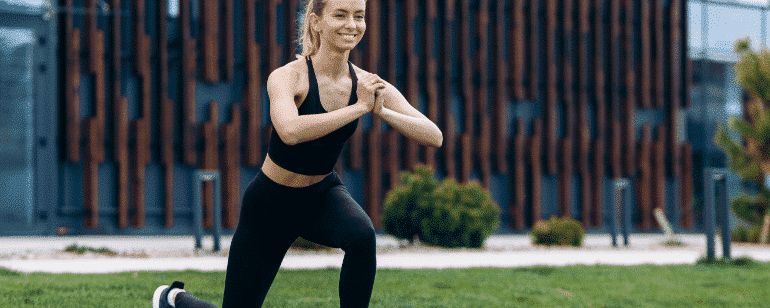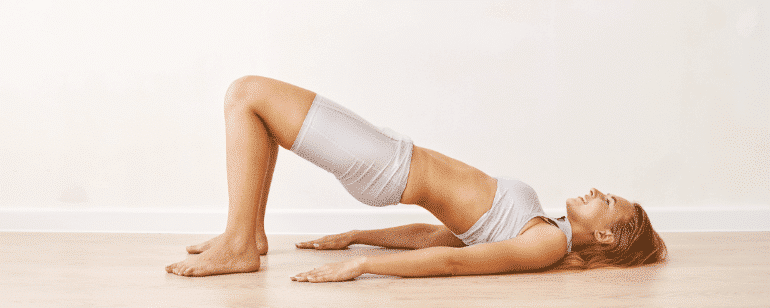The hip forms the center of our body and provides a connection between the lower and upper body. If pain occurs in the hip area, it can be caused by malpositions, signs of wear and tear, overloading or weak muscles. To reduce hip pain, it helps to get the muscles of the hip itself and nearby body parts moving. Light workouts that can be performed at home can provide stabilization and mobilization of the hip muscles as well as related body parts.
Strengthening the thigh muscles
Get into a standing lunge so that your front leg is at a 90 degree angle. Make sure your back stays straight while lunging. Hold the position for a while and stretch your legs again.

Repeat this exercise about 7 times per side. With this stretching session, not only the thigh muscles but also the gluteal muscles are trained so that the hip is supported by stronger surrounding muscles.
Buttocks stretch for hip pain
Sit on a chair or the floor with your back straight and place your right leg on top of your left leg so that the heel of your right foot is on your left knee. Hold this position for a few seconds. To increase the stretch of the gluteal muscles, you can tilt the upper body straight towards the legs. After that, change the page.

Hip lifter against hip pain
Lie straight on the floor with your legs stretched out. Now place your feet on the floor so that there is a triangle between your buttocks and feet. Press the lower spine against the floor here if you should find yourself in a hollow back. Now lift your buttocks off the floor bit by bit until only your feet and shoulders are touching the floor. Hold this position for a few seconds and lower the pelvis again. Repeat this exercise about 7 times.

Easy movement patterns that strengthen the hip muscles as well as surrounding muscles help reduce wear and pain. Chronic hip pain, on the other hand, should be investigated more closely. A physical therapist can get to the bottom of the causes of hip pain and initiate individualized therapeutic measures. It is important that you respond to pain, blockages or tension promptly to avoid long-lasting damage. With the right training as well as adapted measures, the hip can be relieved and supported promptly and effectively.
